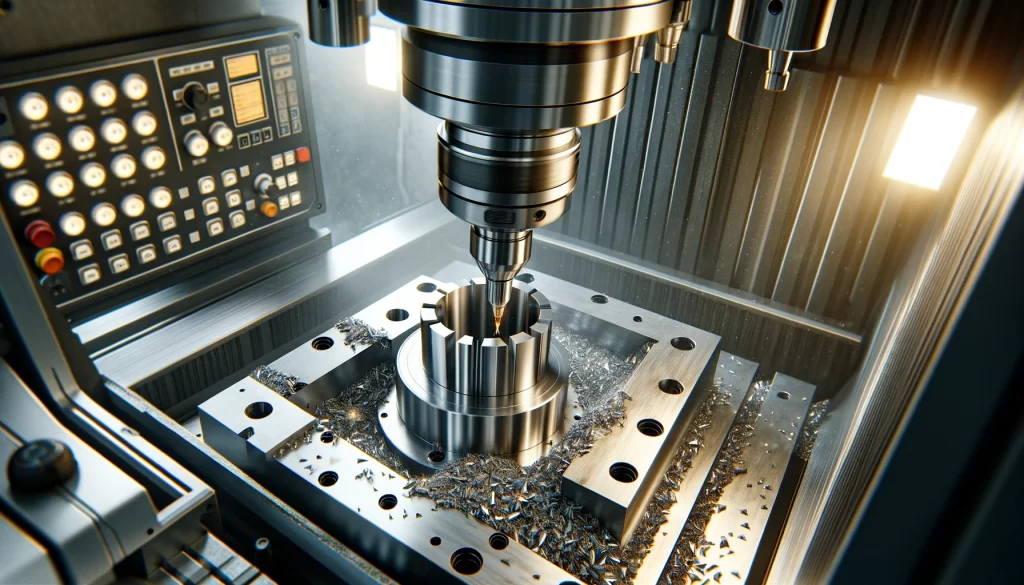Prototype to Low Volume Production CNC Machined Parts
F&M Tool and Die’s CNC machining services offer both milling and turning of custom manufactured parts. We quote jobs in under 48 hours and deliver parts in 2-5 weeks, expedites welcome. Our sweet spot for CNC parts are in the 1-50 quantity range, we love prototype work! We work from a variety of metals and plastics.

We excel at machining large parts, and parts made from hard materials (tool steels)
CNC MILLING & TURNING
- Lead Time – Parts in 2-5 Weeks
- Quoting – Quotes Returned Within 48 Hours
- Volume – Quantities 1-50+
- Part Size – Ranging from 1 in. x 1 in. x 1 in. to 60 in. x 30 in. x 28 in.
- Materials – Plastics & Metals
CNC machining, or Computer Numerical Control machining, is a manufacturing process that utilizes computerized controls and machine tools to remove material from a workpiece to create a custom-designed part or product. This process is widely used in various industries for producing components with high precision and accuracy. CNC machining can involve different types of machine tools, such as milling machines, lathes, routers, and grinders.
Here are the key components and steps involved in CNC machining:
- CAD (Computer-Aided Design):
- The process begins with the creation of a detailed 3D model of the part using CAD software. This digital design specifies the dimensions, tolerances, and other specifications of the part.
- CAM (Computer-Aided Manufacturing):
- The CAD model is translated into machine-readable instructions using CAM software. This software generates the toolpaths and machining instructions necessary for the CNC machine to produce the part.
- CNC Machine Setup:
- The machinist sets up the CNC machine by securing the workpiece to the machine table and loading the required cutting tools into the tool changers.
- Toolpath Execution:
- The CNC machine executes the programmed toolpaths, which define the movements of the cutting tools in three dimensions. These movements are precisely controlled by the CNC system.
- Material Removal:
- The cutting tools remove material from the workpiece according to the specified design. The CNC machine may use milling cutters, drills, lathes, or other tools based on the machining requirements.
- Precision and Monitoring:
- CNC machines offer high precision and accuracy, and many modern systems incorporate sensors and monitoring devices to ensure the quality of the machining process. Machinists may make adjustments as needed during the machining operation.
- Multi-Axis Machining:
- Some CNC machines are capable of multi-axis machining, allowing for complex and three-dimensional shapes to be produced. This is especially useful for parts with intricate geometries.
- Finishing Operations:
- After the initial machining is complete, additional finishing operations such as deburring, polishing, or coating may be performed to achieve the desired final product.
CNC machining offers several advantages, including:
- High Precision: CNC machines can achieve very tight tolerances and high accuracy in the production of parts.
- Versatility: CNC machining can be applied to a wide range of materials, including metals, plastics, and composites.
- Efficiency: Once the CNC program is set up, it allows for efficient and repeatable production of multiple identical parts.
- Complex Geometries: CNC machines can produce complex and intricate shapes that may be challenging or impossible with traditional machining methods.
CNC machining is widely used in industries such as aerospace, automotive, medical, electronics, and more. It has become a standard method for producing high-quality, precision components in modern manufacturing.

